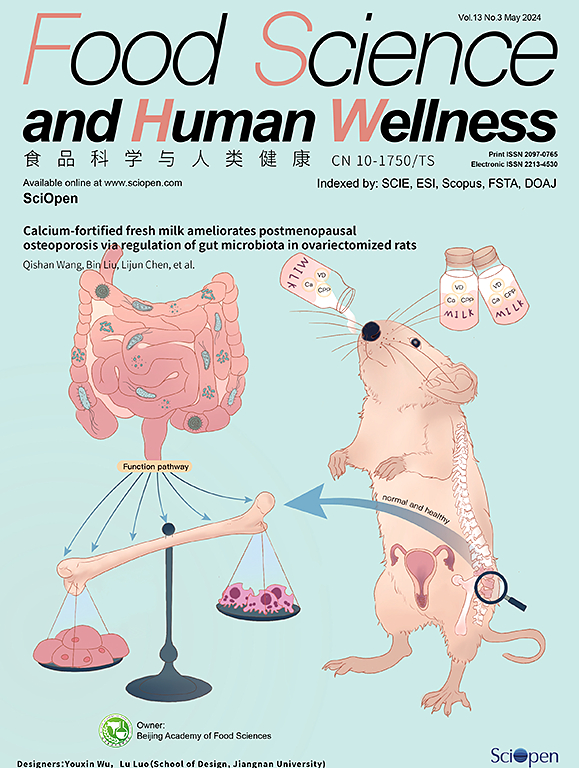基因组比较分析表明,饮食习惯影响了双歧杆菌对不同地域人群肠道的适应性
IF 7.4
1区 农林科学
Q1 FOOD SCIENCE & TECHNOLOGY
引用次数: 0
摘要
近年来,关于双歧杆菌基因组的研究主要集中在分离源(肠道位点),但关于分离区域的报道却很有限。本研究通过基因组比较分析,分析了从不同地理种群分离的双歧杆菌基因组的差异。基因组水平的结果表明,美国分离株的 GC 含量明显高于中国和俄罗斯分离株。基于919个核心基因的系统发生树显示,双歧杆菌可能与分离地区的地理特征有关。此外,功能注释分析表明,双歧杆菌中参与降解植物和宿主来源多糖的碳水化合物活性酶(CAZys)的拷贝数较高,18种CAZys在不同地理种群中存在显著差异,表明双歧杆菌已适应人类肠道环境,尤其是在富含纤维饮食的群体中。饮食习惯是双歧杆菌在不同地域人群中存在差异的主要原因之一。此外,双歧杆菌在糖苷水解酶、CRISPR-Cas 系统和噬菌体方面表现出高度的多样性。这项研究为进一步研究和开发双歧杆菌提供了遗传基础。本文章由计算机程序翻译,如有差异,请以英文原文为准。

Comparative genomic analysis revealed that dietary habits affected the adaptation of Bifidobacterium bifidum to the intestinal tract in different geographic populations
Recent research on the genome of Bifidobacterium bifidum has mainly focused on the isolation sources (intestinal tract niche) recently, but reports on the isolation region are limited. This study analyzed the differences in the genome of B. bifidum isolated from different geographical populations by comparative genomic analysis. Results at the genome level indicated that the GC content of American isolates was significantly higher than that of Chinese and Russian isolates. The phylogenetic tree, based on 919 core genes showed that B. bifidum might be related to the geographical characteristics of isolation region. Furthermore, functional annotation analysis demonstrated that copy numbers of carbohydrate-active enzymes (CAZys) involved in the degradation of polysaccharide from plant and host sources in B. bifidum were high, and 18 CAZys showed significant differences across different geographical populations, indicating that B. bifidum had adapted to the human intestinal environment, especially in the groups with diets rich in fiber. Dietary habits were one of the main reasons for the differences of B. bifidum across different geographical populations. Additionally, B. bifidum exhibited high diversity, evident in glycoside hydrolases, the CRISPR-Cas system, and prophages. This study provides a genetic basis for further research and development of B. bifidum.
求助全文
通过发布文献求助,成功后即可免费获取论文全文。
去求助
来源期刊

Food Science and Human Wellness
Agricultural and Biological Sciences-Food Science
CiteScore
8.30
自引率
5.70%
发文量
80
审稿时长
28 days
期刊介绍:
Food Science and Human Wellness is an international peer-reviewed journal that provides a forum for the dissemination of the latest scientific results in food science, nutriology, immunology and cross-field research. Articles must present information that is novel, has high impact and interest, and is of high scientific quality. By their effort, it has been developed to promote the public awareness on diet, advocate healthy diet, reduce the harm caused by unreasonable dietary habit, and directs healthy food development for food industrial producers.
 求助内容:
求助内容: 应助结果提醒方式:
应助结果提醒方式:


